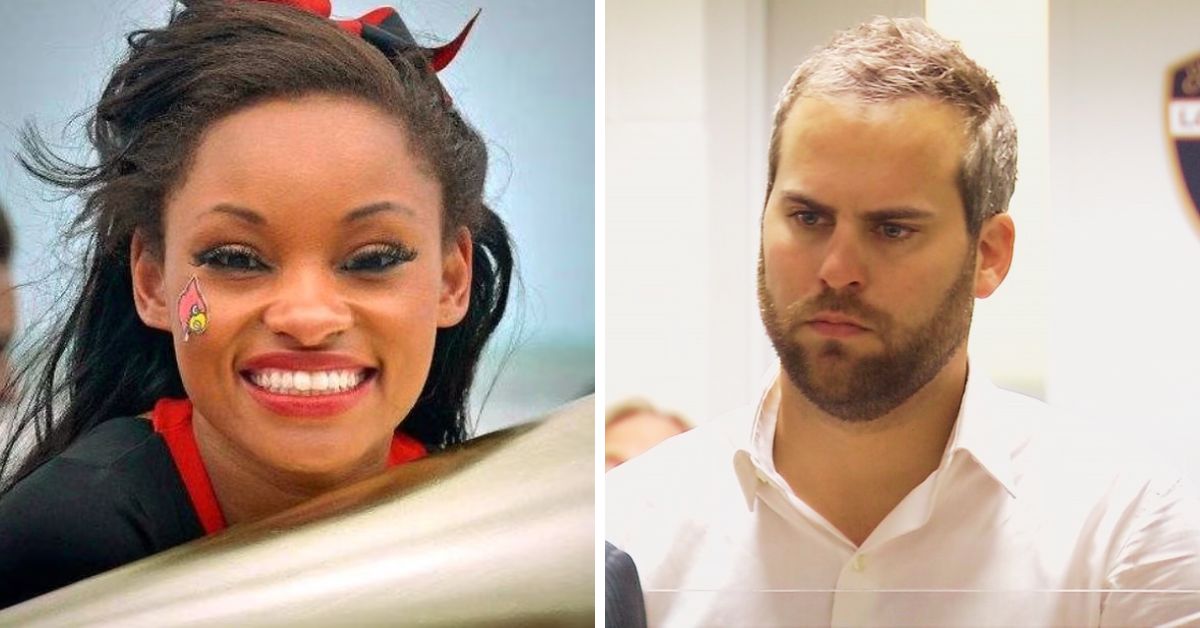Bradley Caraway was found guilty on Thursday of reckless murder and driving under the influence in the August 2016 crash that killed Shanae Moorman, a cheerleader at the University of Louisville who was 25 years old.
In the four-day trial, the jury took more than four hours to come to a decision. The decision was based on the evidence of several medical examiners and police investigators.
But even though Caraway was found guilty, he was free to go. He was locked up at home for six years while he waited for his sentencing. He was also found guilty of careless homicide, which is not the same as murder.
Caraway could have gone to jail for up to five years for the low-level crime, but he got credit for the time he spent on house arrest and walked free on Thursday.
“We wish that Shanae (was) here, and we know she is not,” said Commonwealth’s Attorney Gerina Whethers. “It’s been a very, very troubling and emotional seven years for the family.”
— cheerUPDATES (@cheerUPDATES) September 7, 2023
The Fatal Crash: A Terrifying August Morning
Police say that Caraway, who was 34 at the time of the accident, was drunk when he crashed the car he and Moorman were in early in the morning of August 2016.
Police said that Moorman was the only person there when they got there. She had been thrown out of the car, which was now on top of her. She was hurt so badly that she died.
On Tuesday, the jury heard from Dr. Bill Smock, a former medical examiner who is an expert in medical evidence, and Dr. Jeffrey Springer, the medical examiner who did the autopsy on Moorman.
Smock was a key witness for the prosecution because it was his investigation in 2016 that showed Caraway was the driver based on evidence like window glass in his hair and seatbelt marks that showed he was restrained and didn’t fly out of the car, so he lived.
Find out why these articles have gone viral:
- Josh Owens Accident: What Happened to the Moonshiners Star?
- Vitalie Taittinger Accident: All The Latest Details!
The Autopsy Report: Dr. Jeffrey Springer’s Insights
Moorman’s autopsy was done by a medical expert named Springer. He said that she died because she choked on her own blood after the crash. He said that blunt force injuries is often what kills people in car accidents, but that was not the case with Moorman.
Instead, he said that she died because she couldn’t breathe after being pinned under the car. This is what “traumatic asphyxia” means. Moorman also had broken ribs, Springer said.
Springer’s evidence was very important because it answered the question of whether or not Caraway could have saved Moorman by pulling her out of the water.
“Asphyxia is the lack of oxygen in the body or the inability of the body to use oxygen,” he said. “There are multiple causes of asphyxia: traumatic asphyxia is one of those, and that is due to the compression of the body by an object that prevents the diaphragm and the ribs from rising and therefore bringing in air, and thus no oxygen.”
Caraway’s Role in the Crash
Caraway’s defense team, which was led by attorney Rob Eggert, said that Caraway wasn’t driving the car when it crashed. Wednesday, an expert on crashes tried to show that. Henry Cease, a 20-year veteran of the Kentucky State Police who used to work there, was called to the stand as an expert on how crashes happen.
“There is truth to be had in this case, there is science,” said Eggert after the jurors returned Thursday’s verdict. “There are facts, there is proof, there is DNA. The truth is to be found in the evidence.”
Caraway was found walking along I-265 without a shirt or shoes hours after the crash. Police said that his blood alcohol level was at least twice as high as what is allowed by law.
“A person should never drive a car if their blood-alcohol level is twice the legal limit. They should not drive at 83 miles per hour, and they should not drive with an unbelted passenger,” said Assistant Commonwealth’s Attorney Andrew Daley. “We have proven the defendant did all of those things.”
Caraway’s Drunk Driving and Survival
The government said that Caraway was driving drunk, that he was wearing his seatbelt, that he survived the crash, and that he walked away.
Cease said that after looking at all of the Louisville Metro Police papers and medical forensics, he thought Caraway was in the passenger seat, wasn’t wearing a seatbelt, and was thrown out of the car first.
He thought that Moorman slipped out of his seatbelt at the end of the rolling crash, which he said is possible during rollovers. The prosecution brought back Lt. Clarence Beauford of the LMPD to testify again. He said that wasn’t true.
“We work a number of rollover collisions — and weekly they occur here in Louisville — and many, many, many times, a restrained occupant is still inside of that restraint as that rollover occurs,” Beauford said.
For the latest updates and breaking news, follow us on Twitter and stay informed.
